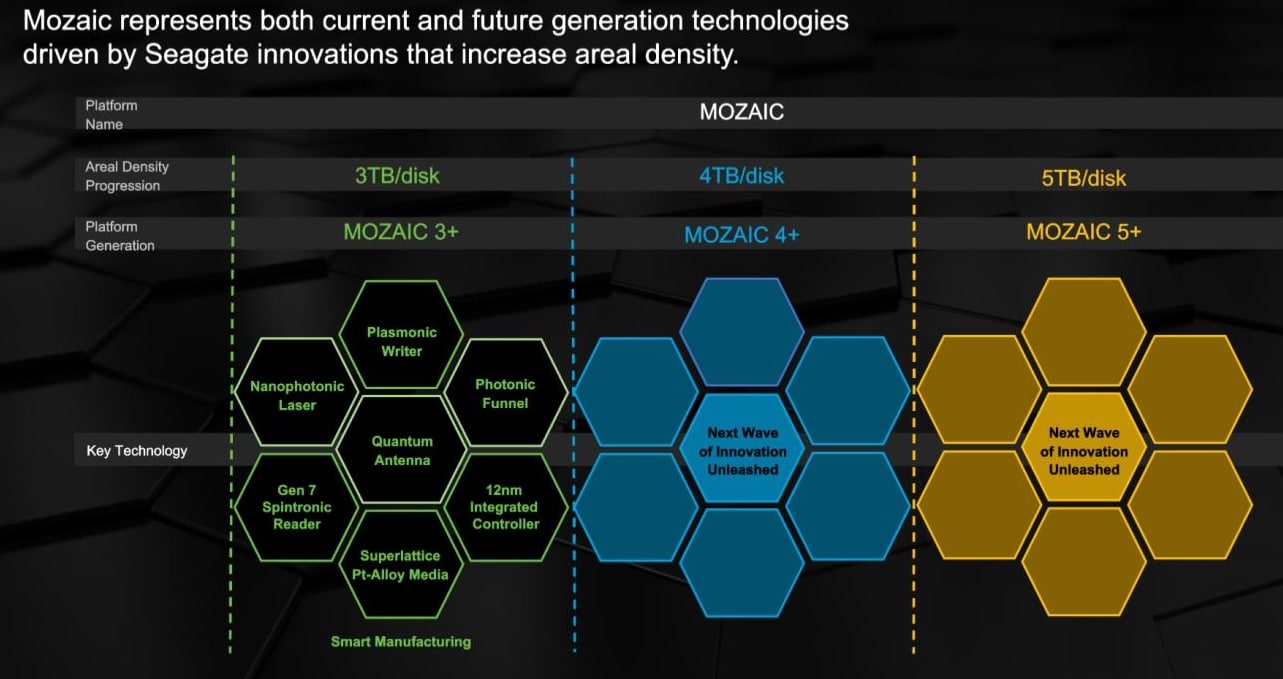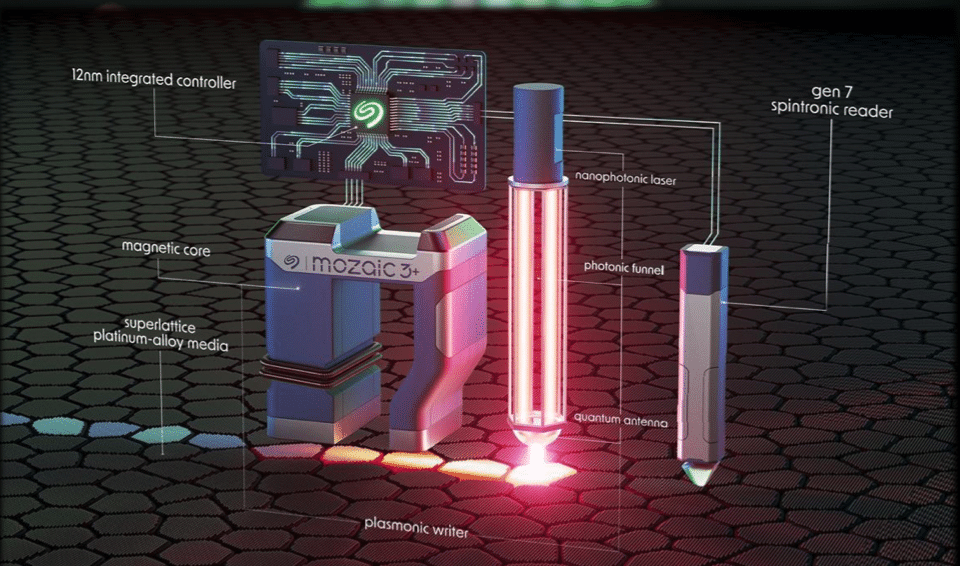Seagate has launched the new Moziac 3+ hard drive platform that incorporates Seagate’s implementation of Heat-Assisted Magnetic Recording (HAMR) technology. The new HAMR drives boast an areal density of 3TB+ per platter, with a roadmap that reaches 4TB+ and 5TB+ per platter. To get fully up to speed on HAMR, we have an extensive podcast on the topic.

The demand to retain more data for extended periods has data centers struggling to add volume to an already-packed floor. Moziac 3+, with areal densities of 30TB+, allows customers to store more data in the same floor space. The areal density innovation effectively increases capacity within the same footprint, delivering scale, TCO, and sustainability benefits. Upgrading from a 16TB conventional perpendicular magnetic recording (PMR) drive to an Exos 30TB+ Moziac 3+ drive essentially doubles the same footprint’s capacity.

Getting A Bigger HAMR
HAMR technology allows data bits to become smaller and more densely packed while remaining magnetically and thermally stable. To write new data, a small laser diode attached to each recording head momentarily heats a tiny spot on the disk, enabling the recording head to flip the magnetic polarity of a single bit at a time, allowing the data to be written. Each bit is heated and cooled down in a nanosecond, meaning HAMR lasers do not impact drive temperature. In fact, HAMR lasers do not affect the media’s temperature, stability, or reliability.
According to the Advanced Storage Technology Consortium (ASTC), HAMR is the next significant storage technology innovation to increase the amount of data storage in the area available to store data. This increase in areal density will help fuel hard drive product development and growth through the next decade.
Seagate CEO Dave Mosley commented that AI use cases have put a premium on raw data sets, forcing companies to store all the data they can, making areal density vitally important. He notes that the Mozaic 3+ platform “represents more than just HAMR technology; it comprises several industry-first innovations that we’ve integrated to help us scale areal density.”
Highlights of the new Mozaic 3+ platform include:
- Superlattice Platinum-Alloy Media: Higher-density recording requires smaller media grain size at nanoscale. The challenge is that smaller grains are more unstable, and legacy alloys don’t provide sufficient magnetic stability for effective and reliable storage. Mozaic 3+ hard drives use an innovative iron-platinum superlattice structure, which significantly increases the magnetic coercivity of disk media. This allows for precise data writing and bit stability.
- Plasmonic Writer: Since the media are made magnetically “harder” to prevent instability, the design
required specific engineering to accommodate Seagate’s unique implementation of HAMR. Anchoring this technology is a nanophotonic laser, which produces a miniscule heat spot on the media surface to write the data reliably.
Seagate also announced plans to integrate the nanophotonic laser into the plasmonic writer sub-system vertically.
- Gen 7 Spintronic Reader: The reader also needed to evolve to read those smaller grains of data. Incorporating quantum technology, Mozaic 3+ includes one of the world’s smallest and most sensitive magnetic field
reading sensors. - 12nm Integrated Controller: Orchestrating this technology requires an integrated controller, a system-on-a-chip, developed by Seagate. This application-specific integrated circuit delivers up to three times the performance compared to prior solutions.
The Mosiac 3+ platform powers Seagate’s Exos product family, with the new Exos 30TB+ shipping to hyperscale cloud customers this quarter.




 Amazon
Amazon